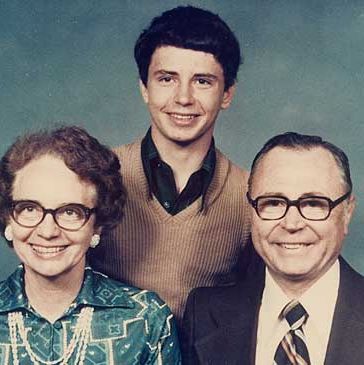
This article was first published in 2006, but we are revisiting the review in the wake of Daniel Johnston’s death.
It’s no big news that the line between artistry and mental illness can be perilously thin, but how porous it is in the work of Daniel Johnston — barely a membrane. In The Devil and Daniel Johnston, the director, Jeff Feuerzeig, tells the one-quarter inspirational, three-quarters nerve-racking tale of the “manic-depressive” singer-songwriter, visual artist, and cult figure. Although I’m not a member of this particular cult — which seems to thrive as much on sympathy as admiration — I found the documentary surprisingly diverting as a case study: not only of a talented misfit sublimating like mad to keep his loneliness from consuming him but also of a fringe artistic community (which includes the makers of this film) that rallies to give him the reinforcement he craves.
This is one of a new generation of documentaries that have access to a vast library of the subject’s home movies. (Given the modern ubiquity of video cameras, we should steel ourselves for a slew of grade-Z versions of Capturing the Friedmans and Tarnation.) The Devil and Daniel Johnston opens with the twentysomething artist in 1984—a dark, skeletally thin, but not unattractive, young man who introduces himself as the “ghost of Daniel Johnston.” It’s quite a non sequitur when Feuerzeig cuts to the present-day Johnston with white hair and an awe-inspiring potbelly. It’s even more startling when, after he’s announced to an adoring crowd as “the greatest living singer-songwriter,” he begins to screech his simple, repetitive songs in a voice that goes dependably flat every third syllable.
The above is a little misleading. At their best, Johnston’s folk-rock music and lyrics sound as automatic as breathing while concealing their artfulness, and those wheezing repetitions evoke a mind that’s circling in on hell. (“I’m a loner … I’m a sorry entertainer,” ad infinitum.) But there’s also a lot of the-artist-walking-among-the-flowers-while-the-world-says-get-a-job stuff. The film compares Johnston to the bipolar Brian Wilson, but Wilson’s music is a triumph of alchemy and much of Johnston’s doesn’t quite transcend the mundane agony of being Daniel Johnston. In that might lie its value.
It is certainly the value of The Devil and Daniel Johnston, which charts Johnston’s day-to-day life as it evokes his dream life — mixing tales of dysfunction with songs (many centering on figures like Casper the Friendly Ghost and King Kong) and drawings (eyeballs, heads with their tops lopped off). In college, a woman named Laurie becomes the bella donna of Johnston’s life, the inspiration for a thousand songs — although he scarcely knew her. As his delusions begin to manifest themselves, the suspense is in how he’ll manage to keep from killing himself or someone else. He runs off with a carnival; stumbles into a church in Texas, after getting bonked in the head for using a port-o-potty too long; and settles into a job at McDonald’s while peddling his tapes to an increasingly fascinated group of music writers and slackers. Feuerzeig keeps each strand in focus — Johnston’s wayward neurochemistry, his parents’ early censure, his fundamentalist religious upbringing — to suggest an inner world of submission and defiance. His holy quest is to prove to himself that the artist’s life is not a dance with the devil.
It’s rather touching when the alt-weekly editor Louis Black beats himself up for pressing for Johnston’s committal. He asks: Would he have committed Van Gogh too? You don’t normally think of rock musicians as Samaritans, but members of Sonic Youth comb New Jersey for Johnston, find him babbling about Jesus in a parking lot, and stick him on a bus to his parents’ house in Virginia. A band he ends up performing with first lays eyes on him as he’s being attacked by dogs. His loyal manager returns years after a brusque dismissal (he made the mistake of negotiating with Elektra, a company that Johnston considered satanic) to “spread the word of Daniel Johnston.” The Devil and Daniel Johnston suggests that if art and madness can be sibling-close, so can art appreciation and altruism.





